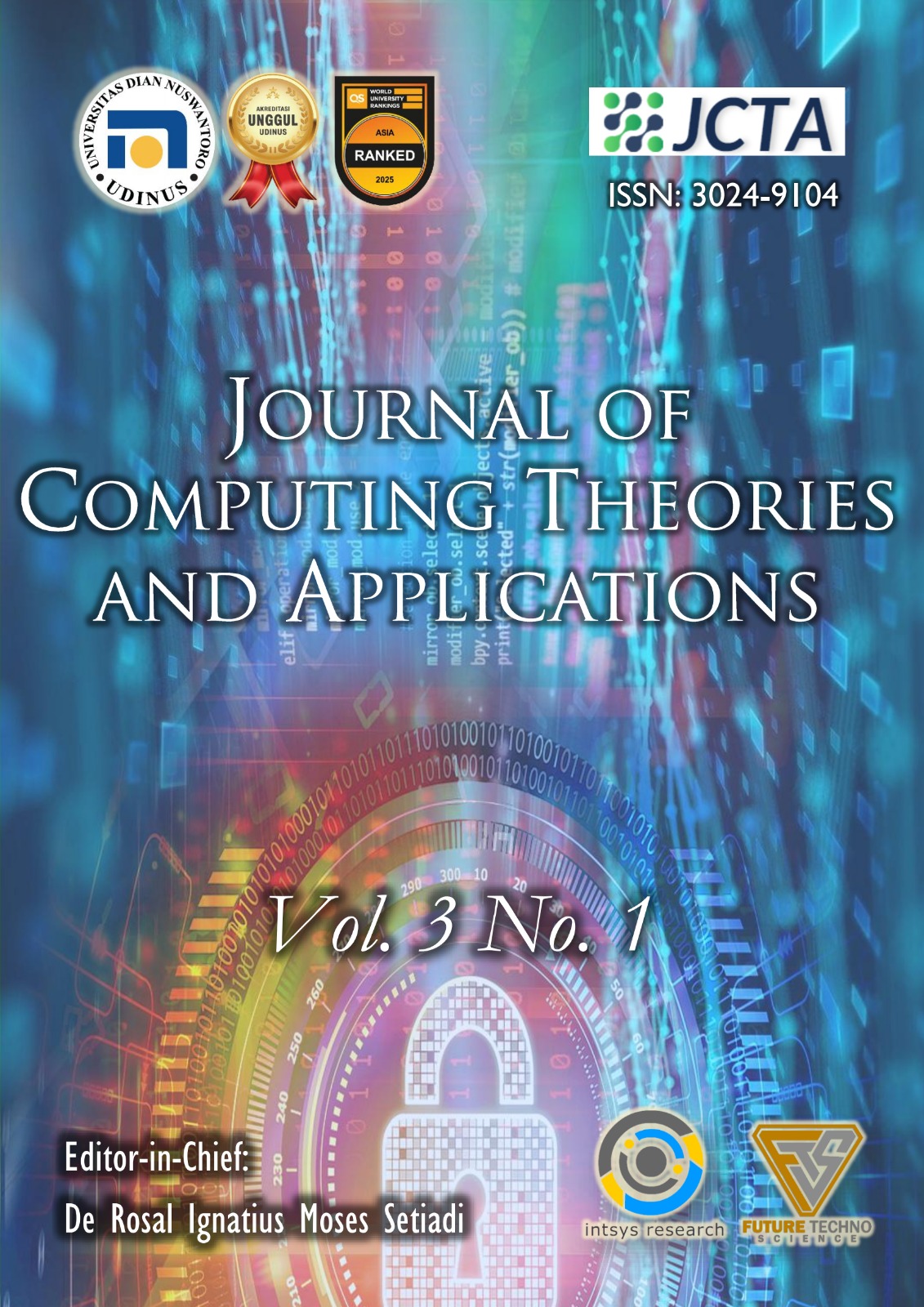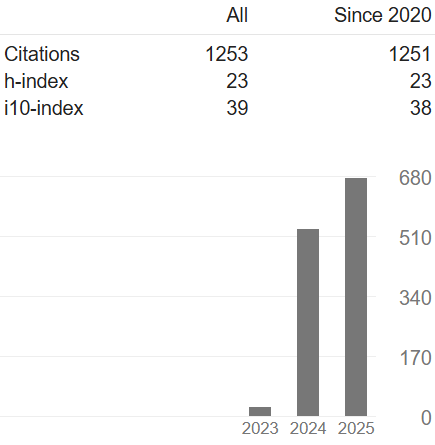Indoor Positioning using Smartphones: An Improved Time-of-Arrival Technique
DOI:
https://doi.org/10.62411/jcta.13305Keywords:
Indoor Positioning, Smartphone, Time of Arrival, MUSIC Algorithm, Pedestrian Dead Reckoning, Kalman Filter, Sensor Fusion, Signal to Noise RatioAbstract
Indoor positioning technology based on smartphones plays an important role in the current technological development context. Especially in applications such as warehouses, supermarkets, hospitals, or buildings. While the global positioning system (GNSS) is popular and effective outdoors, it has several limitations when operating in enclosed spaces, such as indoors, due to the complexity of these environments. Smartphones have many built-in sensors (such as light sensors, sound sensors, gyroscopes, accelerometers, and magnetic sensors) and support the connection of various types of wireless communication technologies such as Wi-Fi and Bluetooth. However, such sensors were not initially developed for positioning applications. This study addresses the positioning problem using the MUSIC technique in conjunction with the Time of Arrival (ToA) method. The effectiveness of the positioning solution is evaluated through the signal-to-noise ratio (SNR) index. The absolute error and squared error indices are evaluated through the cumulative distribution function (CDF) to indicate the effectiveness of the proposed solution. Additionally, we propose a Pedestrian Dead Reckoning method to determine a person's position in indoor environments continuously. Based on the segmentation of the moving process by turns, the direction measurements in each segment are processed using a Kalman filter, which is designed to enhance the results achieved by the system. We also discuss the challenges and some future research directions in the field of smartphone-based indoor positioning.References
M. Zhang, S. Zhang, and J. Cao, “Fusing Received Signal Strength from Multiple Access Points for WLAN User Location Estima-tion,” in 2008 International Conference on Internet Computing in Science and Engineering, Jan. 2008, pp. 173–180. doi: 10.1109/ICICSE.2008.24.
M. L. Trinh, D. T. Nguyen, L. Q. Dinh, M. D. M. T. Nguyen, D. R. I. M. Setiadi, and M. D. M. T. Nguyen, “Unmanned Aerial Ve-hicles (UAV) Networking Algorithms: Communication, Control, and AI-Based Approaches,” Algorithms, vol. 18, no. 5, p. 244, Apr. 2025, doi: 10.3390/a18050244.
Đ. Q. Long, N. H. Công, D. P. Tuấn, N. Q. Vịnh, and N. T. Minh, “A Comprehensive Study of Mobile Robot Navigation and Obstacle Avoidance Schemes,” TNU J. Sci. Technol., vol. 228, no. 14, pp. 302–312, Nov. 2023, doi: 10.34238/tnu-jst.8978.
J. Singh, N. Tyagi, S. Singh, F. Ali, and D. Kwak, “A Systematic Review of Contemporary Indoor Positioning Systems: Taxonomy, Techniques, and Algorithms,” IEEE Internet Things J., vol. 11, no. 21, pp. 34717–34733, Nov. 2024, doi: 10.1109/JIOT.2024.3416255.
G. N. Tran, S. Q. Nguyen, M. T. Nguyen, and S. Kim, “Optimal Power Allocation for Non-Orthogonal Multiple Access Visible Light Communications with Short Packet and Imperfect Channel Information,” in 2022 International Conference on Advanced Technologies for Communications (ATC), Oct. 2022, pp. 234–238. doi: 10.1109/ATC55345.2022.9943006.
T. C. Vu, M. T. Nguyen, V. T. Nguyen, and Q. C. Le, “Approach New Framework of Compressive Sensing Based Secret Sharing in Wireless Sensor Network: Theory and Applications,” in Advances in Information and Communication Technology, 2024, pp. 26–34. doi: 10.1007/978-3-031-50818-9_4.
A. Coboi, M. T. Nguyen, V. N. Pham, T. C. Vu, M. D. Nguyen, and D. T. Nguyen, “Zigbee Based Mobile Sensing for Wireless Sensor Networks,” Comput. Networks Commun., Dec. 2023, doi: 10.37256/cnc.1220233923.
Z.-A. Deng, G. Wang, D. Qin, Z. Na, Y. Cui, and J. Chen, “Continuous Indoor Positioning Fusing Wi-Fi, Smartphone Sensors and Landmarks,” Sensors, vol. 16, no. 9, p. 1427, Sep. 2016, doi: 10.3390/s16091427.
M. T. Nguyen, H. M. La, and K. A. Teague, “Compressive and collaborative mobile sensing for scalar field mapping in robotic networks,” in 2015 53rd Annual Allerton Conference on Communication, Control, and Computing (Allerton), Sep. 2015, pp. 873–880. doi: 10.1109/ALLERTON.2015.7447098.
L. Ruotsalainen, H. Kuusniemi, M. Z. H. Bhuiyan, L. Chen, and R. Chen, “A two-dimensional pedestrian navigation solution aided with a visual gyroscope and a visual odometer,” GPS Solut., vol. 17, no. 4, pp. 575–586, Oct. 2013, doi: 10.1007/s10291-012-0302-8.
A. Ganick and D. Ryan, “Light positioning system using digital pulse recognition,” US 8,248,467 B1, 2012 [Online]. Available: https://patents.google.com/patent/US8248467B1/en
A. Ward, A. Jones, and A. Hopper, “A new location technique for the active office,” IEEE Pers. Commun., vol. 4, no. 5, pp. 42–47, 1997, doi: 10.1109/98.626982.
N. B. Priyantha, A. Chakraborty, and H. Balakrishnan, “The Cricket location-support system,” in Proceedings of the 6th annual interna-tional conference on Mobile computing and networking, Aug. 2000, pp. 32–43. doi: 10.1145/345910.345917.
F. Ijaz, H. K. Yang, A. W. Ahmad, and C. Lee, “Indoor positioning: A review of indoor ultrasonic positioning systems,” in 2013 15th International Conference on Advanced Communications Technology (ICACT), 2013. [Online]. Available: https://ieeexplore.ieee.org/document/6488379
C. N. Reddy and B. R. Sujatha, “TDOA Computation Using Multicarrier Modulation forSensor Networks,” Int. J. Comput. Sci. Commun. Networks, vol. 1, no. 1, pp. 85–89, 2011.
X. Li, S. Li, D. Zhang, J. Xiong, Y. Wang, and H. Mei, “Dynamic-MUSIC: accurate device-free indoor localization,” in Proceedings of the 2016 ACM International Joint Conference on Pervasive and Ubiquitous Computing, Sep. 2016, pp. 196–207. doi: 10.1145/2971648.2971665.
P. P. Hassan, I. Marsland, R. Smith, R. Kerr, E. Iun, and I. Lambadaris, “3D Indoor Positioning Using the 2D-MUSIC Algorithm,” in GLOBECOM 2024 - 2024 IEEE Global Communications Conference, Dec. 2024, pp. 1881–1887. doi: 10.1109/GLOBECOM52923.2024.10901003.
H. Belaidi and F. Demim, “NURBs Based Multi-robots Path Planning with Obstacle Avoidance,” J. Comput. Theor. Appl., vol. 1, no. 4, pp. 478–491, May 2024, doi: 10.62411/jcta.10387.
N. Iwakiri and T. Kobayashi, “Ultra-Wideband Time-of-Arrival and Angle-of-Arrival Estimation Using Transformation Between Frequency and Time Domain Signals,” J. Commun., vol. 3, no. 1, Jan. 2008, doi: 10.4304/jcm.3.1.12-19.
K. Langendoen and N. Reijers, “Distributed localization in wireless sensor networks: a quantitative comparison,” Comput. Networks, vol. 43, no. 4, pp. 499–518, Nov. 2003, doi: 10.1016/S1389-1286(03)00356-6.
L. Lin, H. C. So, and Y. T. Chan, “Accurate and simple source localization using differential received signal strength,” Digit. Signal Process., vol. 23, no. 3, pp. 736–743, May 2013, doi: 10.1016/j.dsp.2012.12.020.
N. Chang, R. Rashidzadeh, and M. Ahmadi, “Robust indoor positioning using differential Wi-Fi access points,” IEEE Trans. Con-sum. Electron., vol. 56, no. 3, pp. 1860–1867, Aug. 2010, doi: 10.1109/TCE.2010.5606338.
S. M. M. Dehghan, H. Moradi, and S. A. A. Shahidian, “Optimal path planning for DRSSI based localization of an RF source by multiple UAVs,” in 2014 Second RSI/ISM International Conference on Robotics and Mechatronics (ICRoM), Oct. 2014, pp. 558–563. doi: 10.1109/ICRoM.2014.6990961.
F. Liu, J. Wang, J. Zhang, and H. Han, “An Indoor Localization Method for Pedestrians Base on Combined UWB/PDR/Floor Map,” Sensors, vol. 19, no. 11, p. 2578, Jun. 2019, doi: 10.3390/s19112578.
M. Ridolfi, S. Van de Velde, H. Steendam, and E. De Poorter, “Analysis of the Scalability of UWB Indoor Localization Solutions for High User Densities,” Sensors, vol. 18, no. 6, p. 1875, Jun. 2018, doi: 10.3390/s18061875.
A. Sesyuk, S. Ioannou, and M. Raspopoulos, “A Survey of 3D Indoor Localization Systems and Technologies,” Sensors, vol. 22, no. 23, p. 9380, Dec. 2022, doi: 10.3390/s22239380.
J. Choliz, M. Eguizabal, A. Hernandez-Solana, and A. Valdovinos, “Comparison of Algorithms for UWB Indoor Location and Tracking Systems,” in 2011 IEEE 73rd Vehicular Technology Conference (VTC Spring), May 2011, pp. 1–5. doi: 10.1109/VETECS.2011.5956174.
J. Liu, “Survey of wireless based indoor localization technologies,” Washington University, 2014. [Online]. Available: https://www.cse.wustl.edu/~jain/cse574-14/ftp/indoor/index.html
Downloads
Published
How to Cite
Issue
Section
License
Copyright (c) 2025 Thang C. Vu, Trung H. Nguyen, Mui D. Nguyen, Dung T. Nguyen, Tao V. Nguyen, Long Q. Dinh, Minh T. Nguyen

This work is licensed under a Creative Commons Attribution 4.0 International License.















